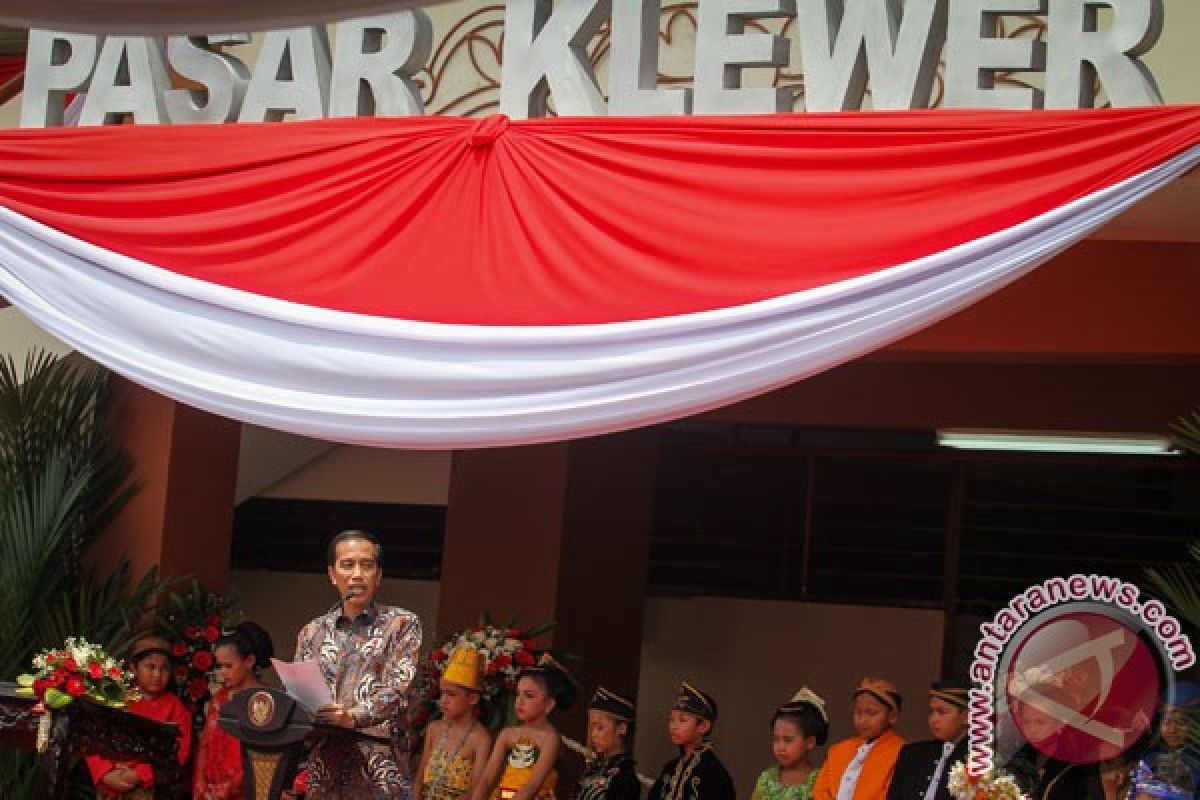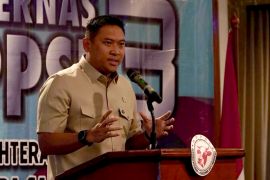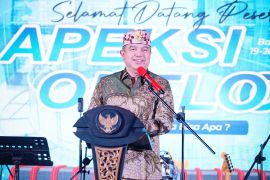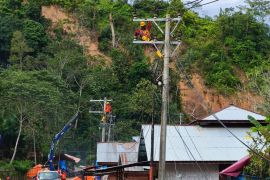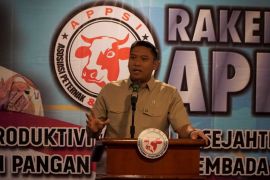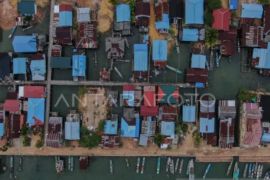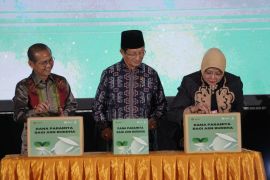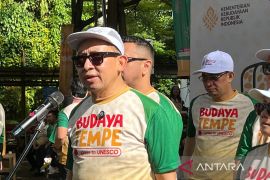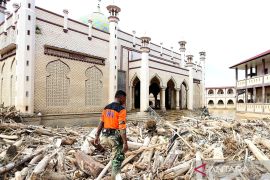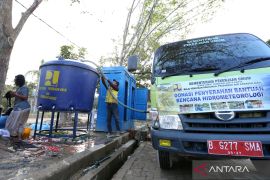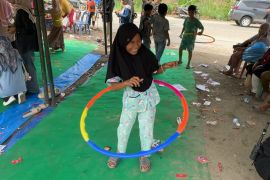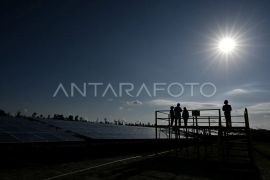"We will revitalize not only the Klewer market, but also markets in many parts of the country, such as Aceh and Papua. (The revitalization of the recently burnt market) in Central Java only awaits its turn," the President said.Jakarta (ANTARA News) - Klewer market is an icon of Solo City located in Central Java, because a visit to Solo would not complete without a visit to the traditional market.
Klewer, which offers various domestic products, has won a place in everyones heart, as almost every visitor is fond of the always busy market.
"Everyone who has visited Solo, knows about Klewer market," President Joko Widodo (Jokowi) said when inaugurating the recently renovated market on April 21.
The Klewer market has 1,700 kiosks, not to mention its yard, which can accommodate 1,000 traders.
The central government has decided to help fund the renovation of the market which was gutted by fire, after repeated request by the Solo Mayor.
As the icon of Solo, Klewer should be able to compete with big malls, according to the President.
Klewer, therefore, should become modern, safe and convenient traditional market to lure buyers who enjoy bargaining, which is a unique character of traditional market.
Other characters of Klewer is hospitality of the vendors, good quality products, and affordable prices.
Klewer is known for selling Solo batik, garments and fruit as well as vegetables produced by domestic farmers.
Before being razed by the fire, the turnover of Klewer market transactions was Rp15 billion daily.
President Jokowi has stated the revitalization of the Klewer Market in Solo, Central Java, reflecting the governments policy to bring about social justice for the people.
"We will revitalize not only the Klewer market, but also markets in many parts of the country, such as Aceh and Papua. (The revitalization of the recently burnt market) in Central Java only awaits its turn," the President said in his address.
As the icon of Solo City, Klewer market and other peoples markets in the country must be developed and managed properly, Jokowi, former Solo mayor, said.
Hence, the market revitalization program will become one of the governments efforts to evenly distribute welfare among the people, he said.
"We will switch state budget allocations to the areas which are in dire need of fund. That is the governments policy to bring about social justice," he said.
The President said the government will develop three pillars as part of the efforts to evenly distribute welfare to the public. The pillars include redistributing assets and reforming the agrarian sector, providing access to capital and banking loans, and strengthening peoples markets.
Meanwhile, Trade Minister Enggartiasto Lukito has explained that the central government had allocated budget amounting Rp157.8 billion for renovation of Klewer market. Of the total, Rp61.8 billion was allocated in 2015, and Rp96 billion in 2016.
The Solo city administration allocated Rp16 billion to help fund the renovation of Klewer.
The minister hoped that Klewer to become an exemplary traditional market in Indonesia.
The market should be managed modernly by using electronic retribution system, the vendors become members of the national manpower insurance (BPJS Manpower), and have Tax Obligation Main Number (NPWP).
A massive fire completely razed the building of legendary Klewer market on December 27, 2014. Millions of sheets of fabric, mostly batik, were also destroyed during the fire.
Built in 1971 during the President Suharto administration era, the two-story market is located beside Surakarta Palace.
It is shopping center for batik traders from Yogyakarta, Surabaya, Semarang and other cities in Java.
Batik cloths and garments, hand-woven fabrics, traditional and local jewelry, leather puppets, basketry, tortoise-shell accessories, trinkets, brassware and other decorative items, and all kinds of antiques are local specialties in the market.
Klewer market is not only as a center of economy, but also a tourist destination.
The market is always crowded everyday. Both domestic and foreign tourists are attracted to visit Klewer.
Outside the market are available fruit stalls and food stalls offering some traditional food from Solo like Intip (dried rice), Serabi (rice flour pancake), jenang, and Brem Solo (introxicating beverage made of fermented rice or tapioca).
As the busiest traditional market in town, Klewer is surrounded by some 50 big and small hotels.
In addition to Klewer, Solo has at least three more big traditional markets, namely Gading, Tanggul and Gilingan.
The development of 5,000 traditional markets and modernizing of the old ones are among the Jokowi administrations Nawacita (Nine Priorities) program during his five-year term.
The revitalization program does not focus on only the physical aspects of the buildings where the traditional markets are located.
But, it also improves their management to allow small traders access to larger capital.(*)
Reporter: Fardah
Editor: Heru Purwanto
Copyright © ANTARA 2017
